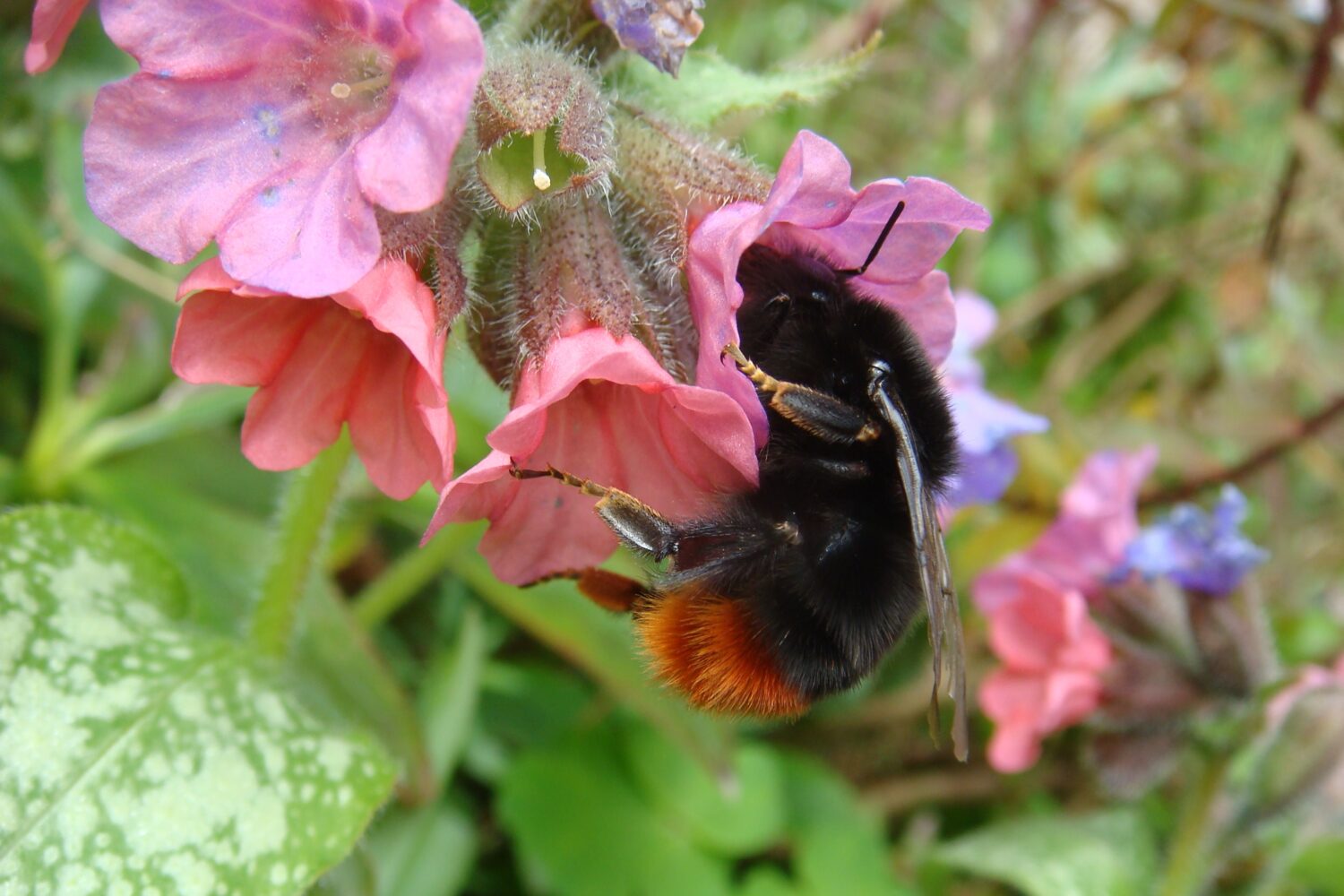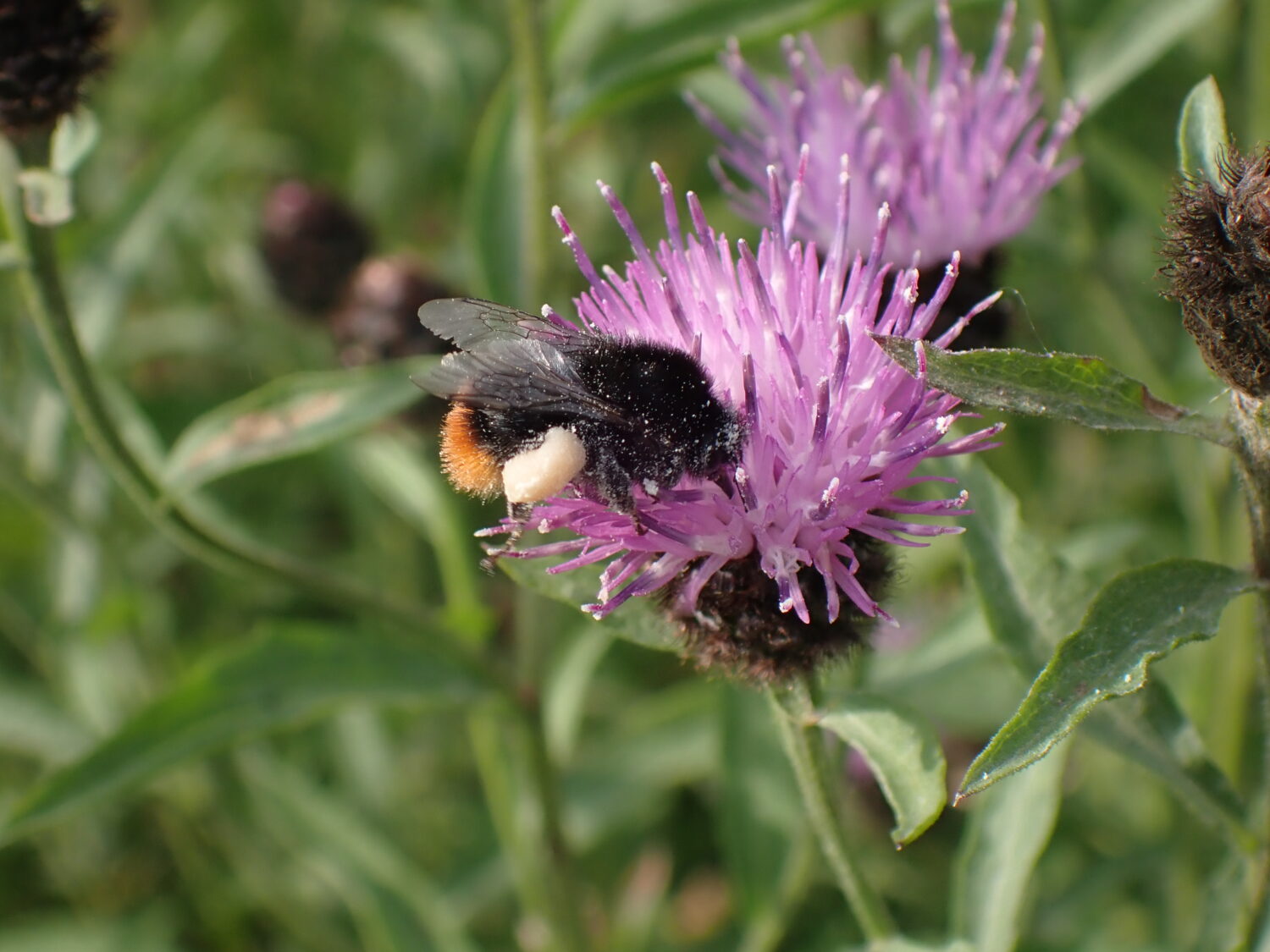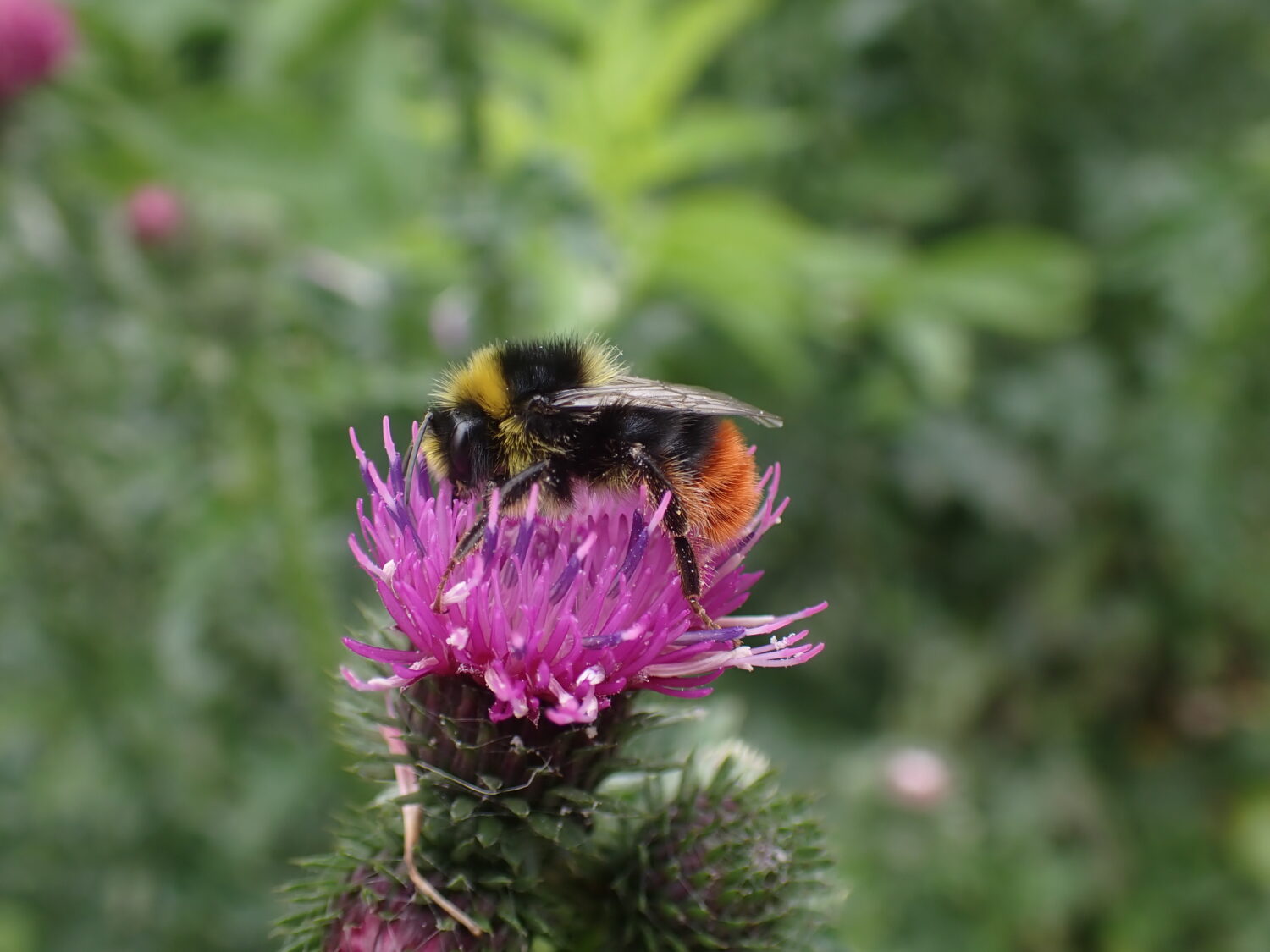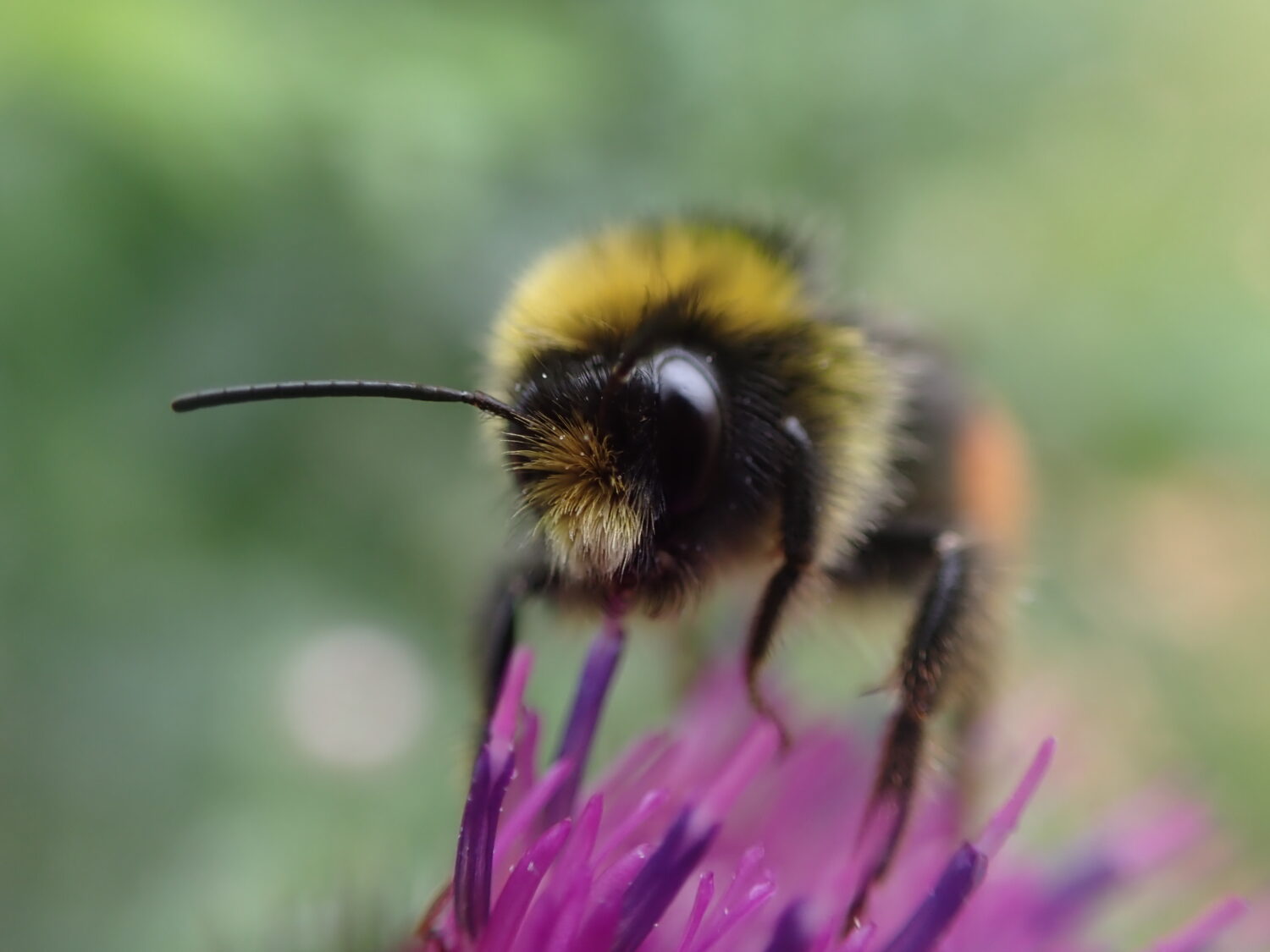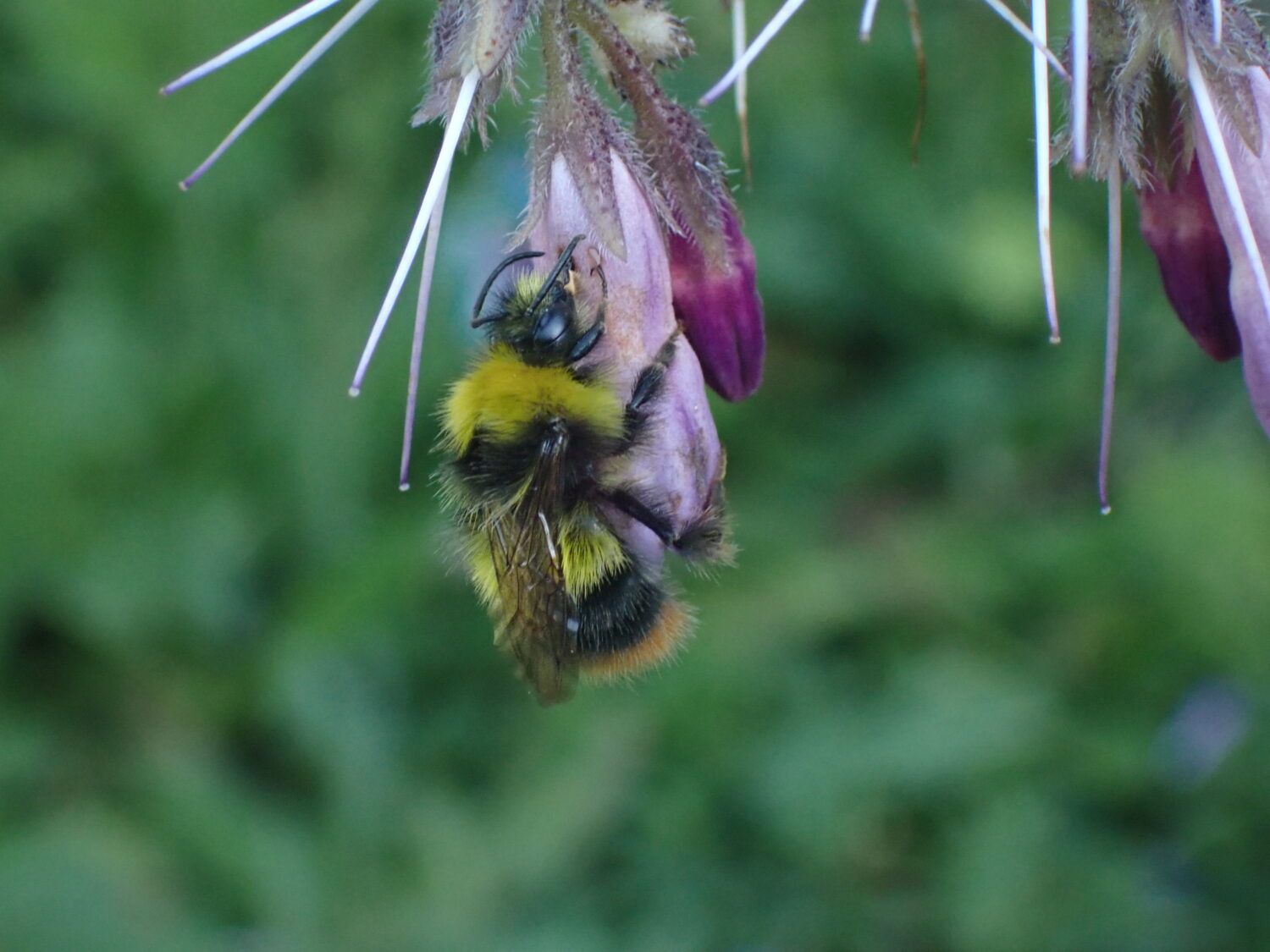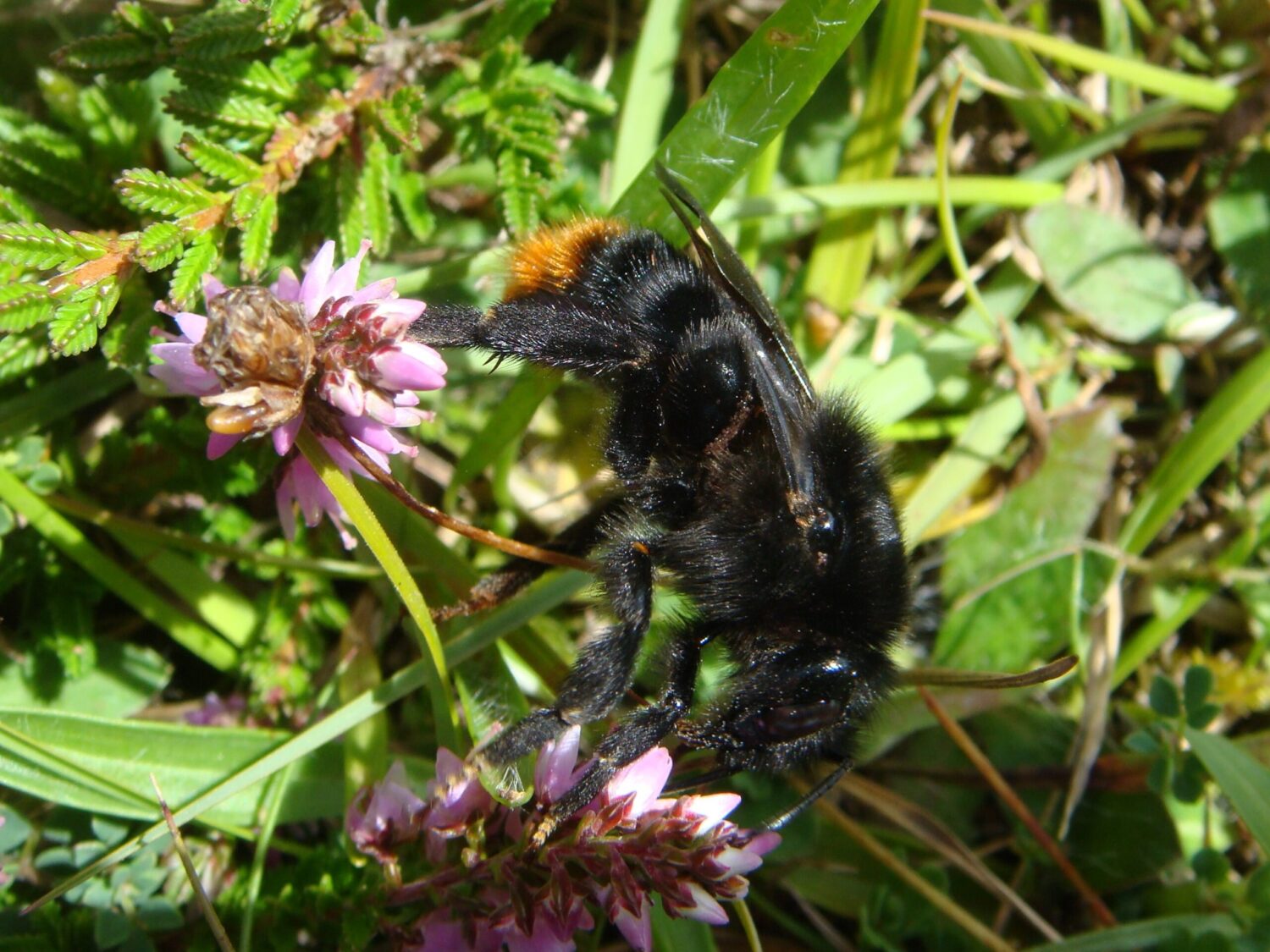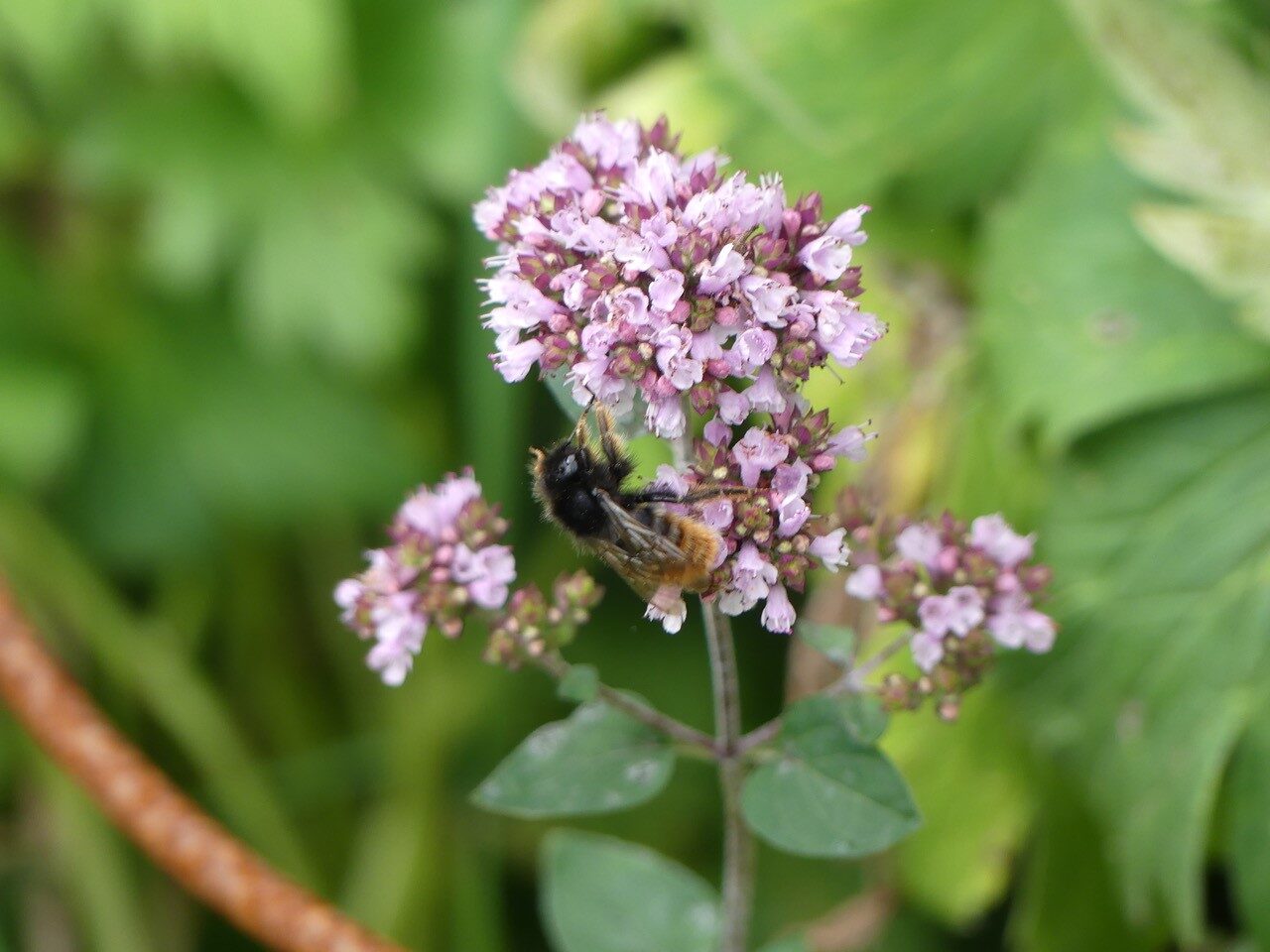Bombus lapidarius
Fast facts
- Common name(s)
- Red-tailed Bumblebee
- Scientific name
- Bombus lapidarius
- Bee group
- A species of social bumblebee
- When to see it
- March – October
Description
The Red-tailed Bumblebee is a distinctive bumblebee commonly found in gardens and parks. Nests are large and are found underground, often containing around 300 workers. This species was one of the first bumblebee species to be recorded in the North East.
Identification
As the name suggests, the Red-tailed Bumblebee has a red tail. Both females (queens and workers) and males have red tails. Males have additional yellow hair and banding, and are out later in summer towards the end of a nest’s life. Queens are first to be seen in the year and workers are on the wing throughout spring and summer.
Queens and workers
Queens and workers have a black-haired body and crimson red tail with no yellow hair. The red tail often extends upto one quarter of the abdomen. Queens are large bees and workers resemble small queens. Queens and workers have pollen baskets on their hind legs that appear shiny without the presence of pollen. The tails of workers can often fade to orange due to sun exposure.
Males
Male Red-tailed Bumblebees also have a red tail but have additional yellow hair and banding. Males have a yellow band behind their head and a weak yellow midriff band on the bottom of their thorax. There is also a tuft of yellow hair above their head and on their face that is often referred to as a ‘moustache’. Both the yellow and red hair can fade due to sun exposure.
Males do look similar to male Early Bumblebees (Bombus pratorum) but male Red-tailed Bumblebees are more elongate and have less extensive yellow banding.
More images of the Red-tailed Bumblebee can be found here
Did you know?
The Red-tailed Bumblebee was one of the first bumblebee species to be recorded in the North East. The first known record of this species is from the notebook of Albany Hancock back in 1827.
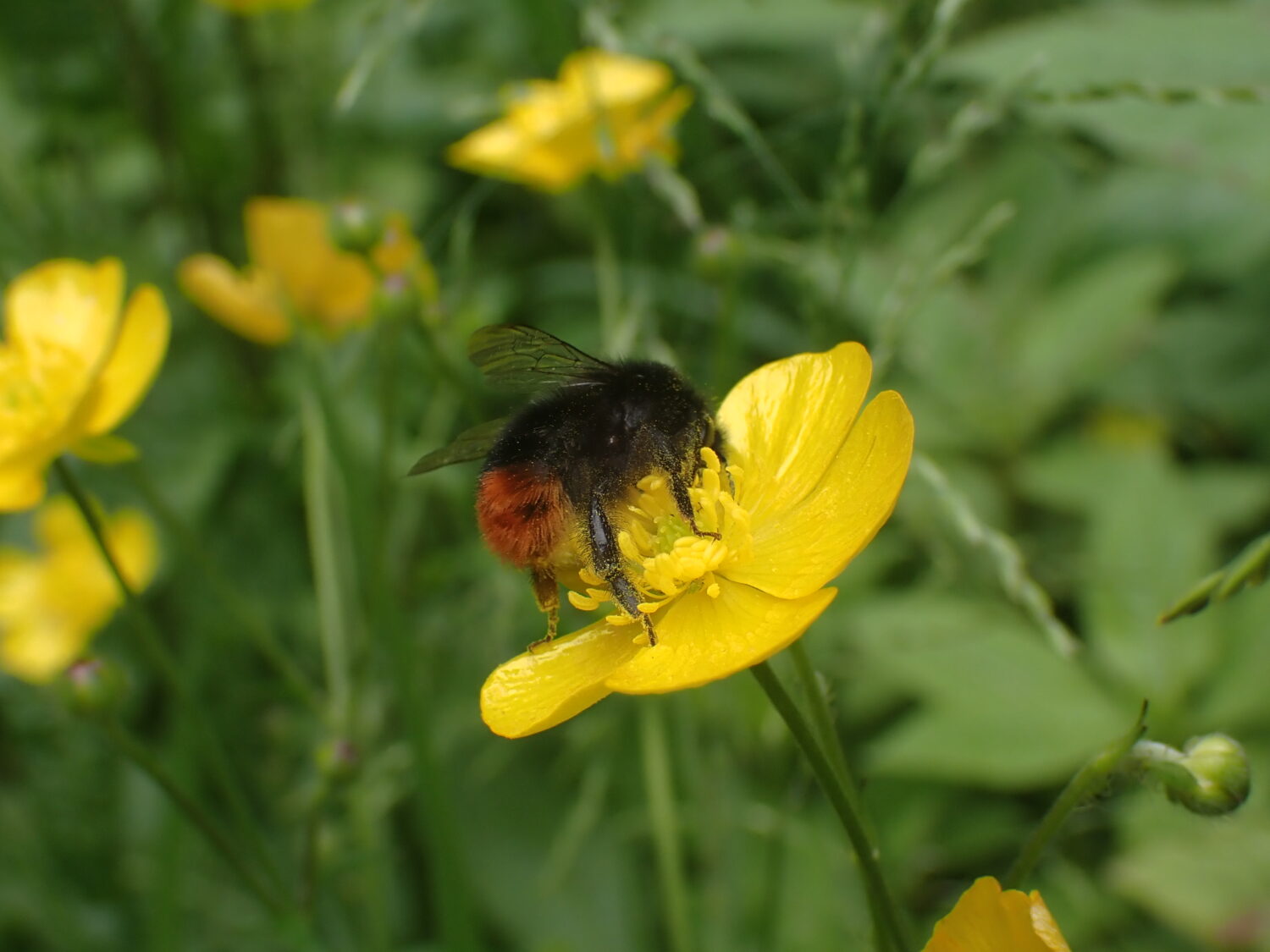
Spotted this bee?
Share your sighting of the Red-tailed Bumblebee and other North East Bee Hunt target species to contribute to the conservation and study of our region’s bees.
Similar species
Early Bumblebee
Male Red-tailed Bumblebees can be confused with the Early Bumblebee (Bombus pratorum). Male Red-tailed Bumblebees have less extensive yellow hair than males of the Early Bumblebees and are more elongate. Female Early Bumblebees also do not have yellow facial hair like that of male Red-tailed Bumblebees.
Red-tailed Cuckoo Bee
Female Red-tailed Bumblebees have the same colour pattern as their cuckoo, the Red-tailed Cuckoo Bee (Bombus rupestris). Look out for the dark, smoky wings of the female Red-tailed Cuckoo Bee. Male Red-tailed Cuckoos also have the same pattern as worker Red-tailed Bumblebees but have densely hairy back legs and often have grey bands. The Red-tailed Cuckoo Bee is a target species of the North East Bee Hunt and its species profile can be found here.
Ecology
Red-tailed Bumblebees have large underground nests containing around 300 workers. The Latin name (‘lapidarius’; of or related to stone) is derived from the species’ tendency to nest under stones, which today also includes patio slabs. This species can be found in a variety of habitats and forages on a wide range of flowering plants.
Find out further information about this species here
Regional Distribution
The Red-tailed Bumblebee is considered a common and widespread bumblebee in the North East. In 2020, this bumblebee was the most recorded species of the North East Bee Hunt with 368 records received. The Red-tailed Bumblebee is one of the common ‘Big Seven’ bumblebees in Britain.
